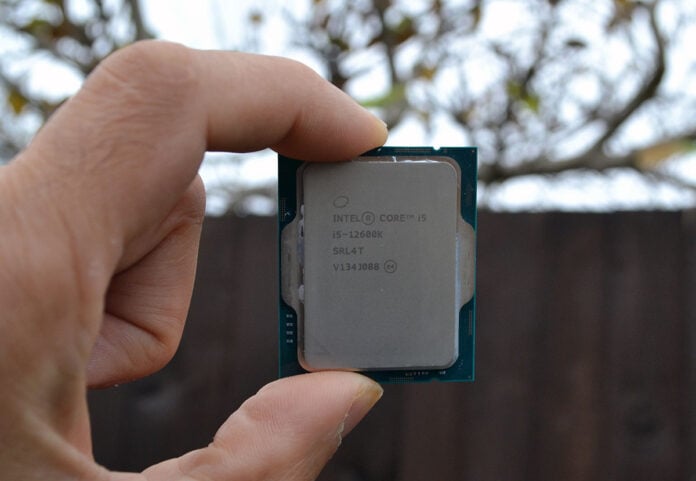Earlier this month, most PC tech column inches were grabbed by the launch of Intel Alder Lake processors. Mixing smaller efficient cores alongside larger performance ones, the hybrid architecture worked well on range-topping Core i9-12900K.
Yet many enthusiasts have more modest means and aspirations for the next upgrade or new PC. This is where chips lower down the pecking order make more sense by offering decent performance with better value.
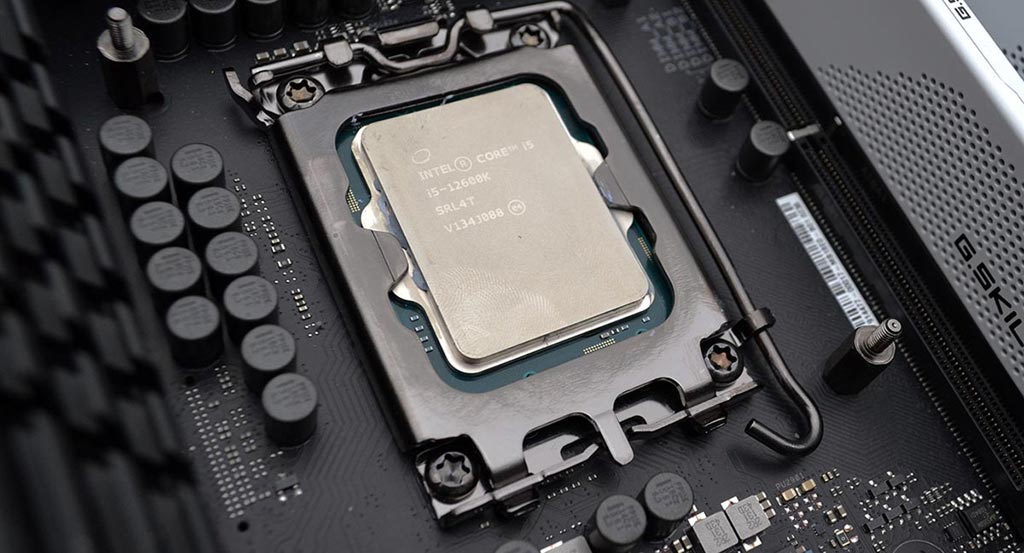

Intel Core i5-12600K
£279 / $289
Pros
- Excellent performance
- Slaps Core i9-11900K around
- Decent pricing
- Forward-looking platform
Cons
- Power spirals once overclocked
Club386 may earn an affiliate commission when you purchase products through links on our site.
How we test and review products.
Chief amongst the price/performance protagonists is the Core i5-12600K. Costing $289 for the IGP-totin’ model and $25 less for the same chip bereft of integrated graphics, the value play appears particularly strong against rival AMD’s Ryzen 5.
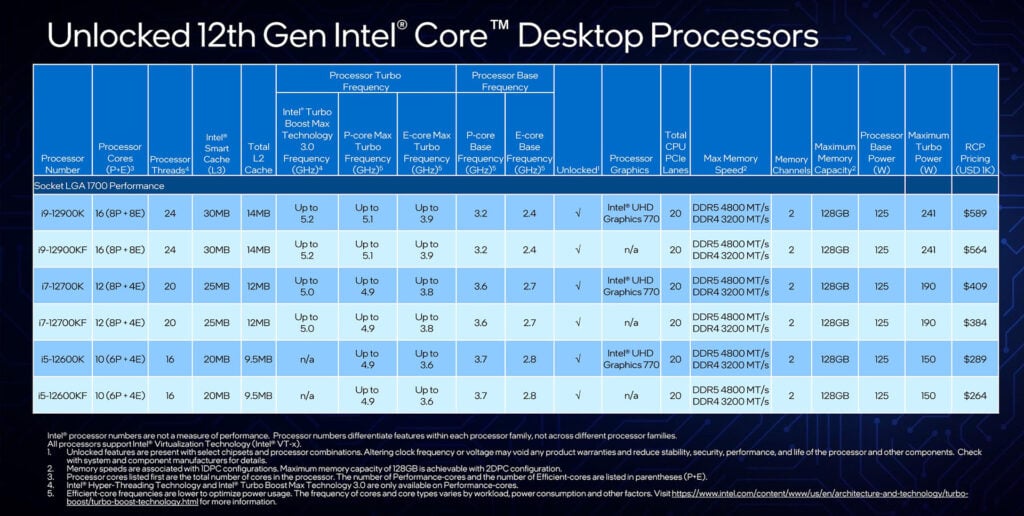
You see, the review Core i5-12600K offers 10 processing cores – six Performance and four Efficient – for a total of 16 threads, compared to six cores and 12 threads on, for example, Ryzen 5 5600X. It’s fair and just to compare them as in-stock UK pricing is £290 apiece.
Core i5-12600K backs up innate promise by harnessing a total of 9.5MB L2. The Performance ‘Golden Cove’ cores grab 7.5MB of this figure with the other 2MB shared by the Efficient ‘Gracemont’ block. A further 20MB of L3 is available to either type of core before any further requests spool out to slower main memory.
Frequencies are understandably lower than on Core i7 and Core i9 but this is still a potent chip for Core i5 branding. 16 of the latest-generation threads is a good return for a third-rung model, especially so at the reasonable price point.
Hybrid in more ways than one
The hybrid nature extends to the memory controller that interfaces with either DDR4 or DDR5 memory. Appreciating the value argument playing out at the bottom of the present stack, it is sensible to pair this model with a mid-level Z690 touting readily-available DDR4.
Readers of the architecture article may recall Intel provides two power levels. One is ostensibly for OEMs with limited cooling scope and the other, known as Maximum Turbo Power, is how most DIYers will run the chip. The more restrained specifications lend themselves to a modest difference between the two levels, unlike the near-doubling of power reserved for Core i9 silicon.
Other than speeds, feeds and core count – which are natural segmenters – Intel does not further artificially hamstring the Core i5 range, meaning it carries the same feature-set as Core i7 and i9. That’s good news for people looking to get a foothold into Alder Lake now, with the promise of a simple in-socket upgrade later.
New platform, new firepower
It bears repeating that Intel 12th Gen Core is necessarily an entire platform upgrade, not merely a chip swap.
The underlying LGA 1700 socket is only available on Intel 600 Series boards, of which Z690 is the only present option. No problem for OEMs building systems, of course, but something to think about for everyone else.
“Intel does not further artificially hamstring the Core i5 range”
Looking at the broader landscape, Intel has recently done well against AMD’s mid-stack chips. Previous-generation Core i5-10600K and 11600K, offering 6C12T processing, held firm against Ryzen 5 of varying pedigrees. Intel now looks to wrest back the mid-range crown and, on paper, has plenty of firepower at its disposal.
CPU Performance
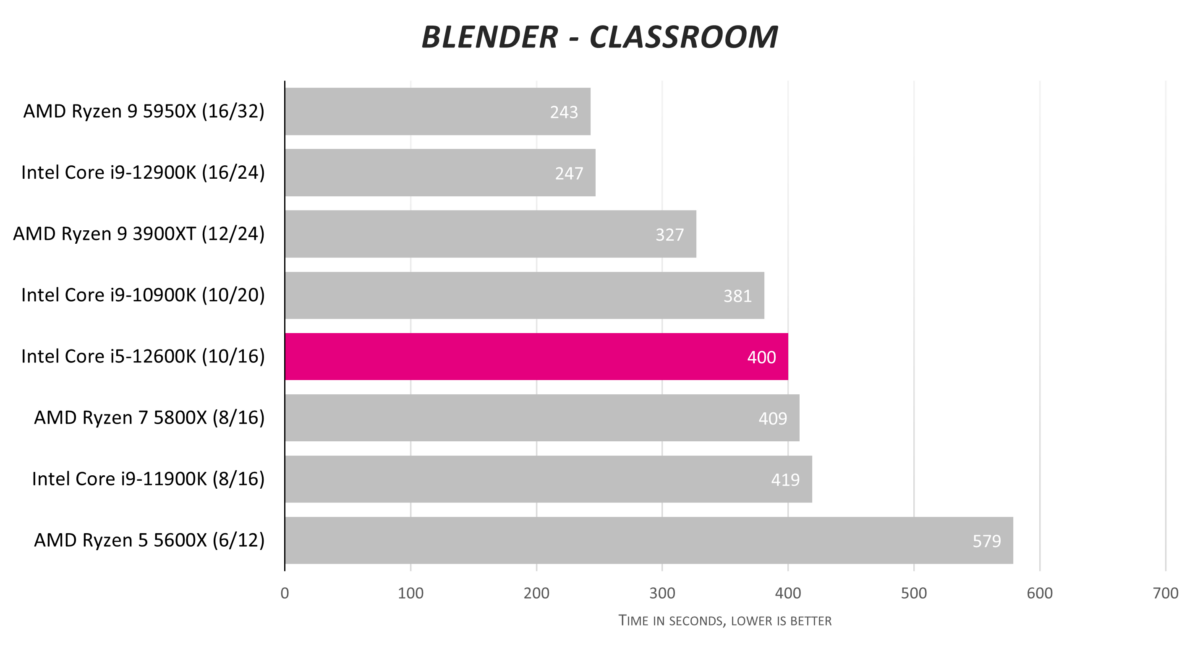
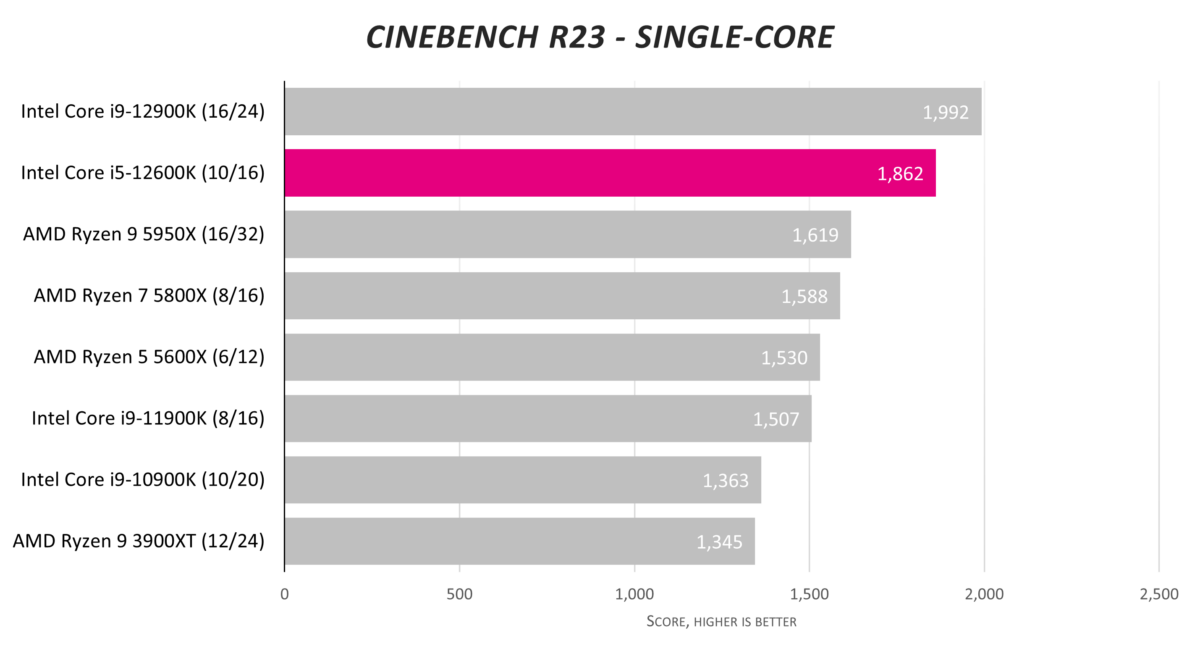
Adding the Ryzen 5 5600X to the graphs provides important context. The combination of six Performance cores and four Efficient offer an impressive showing.
In effect, Intel is offering the same 6C12T main muscle as AMD, and then adding a further four cores as a bonus.
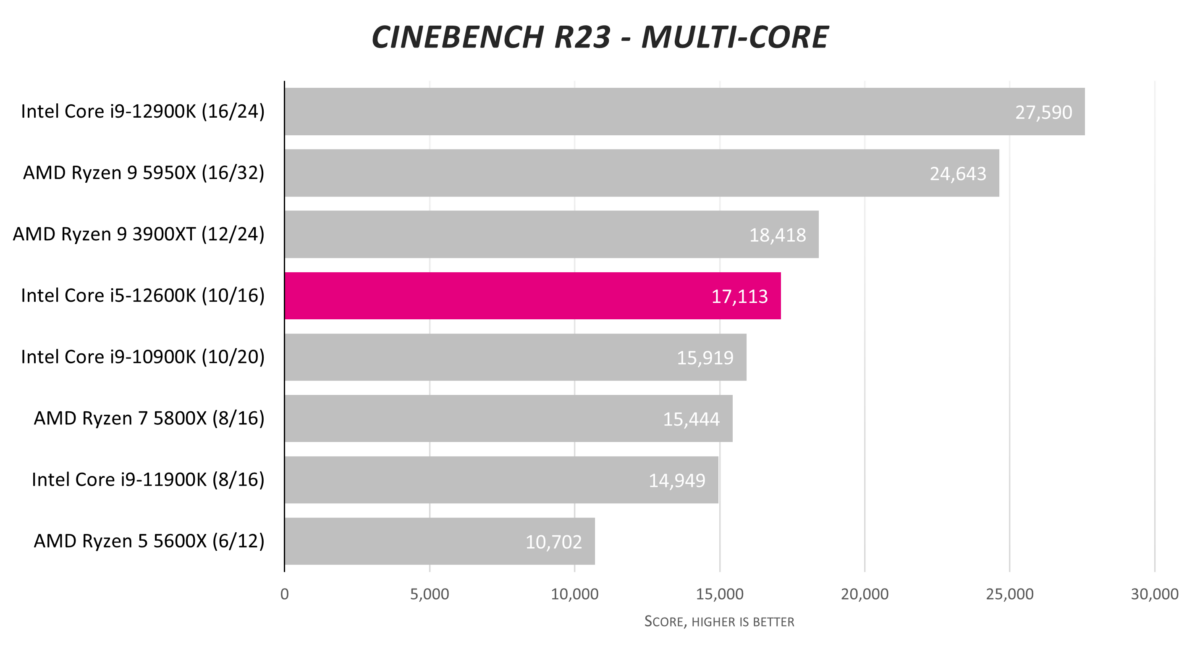
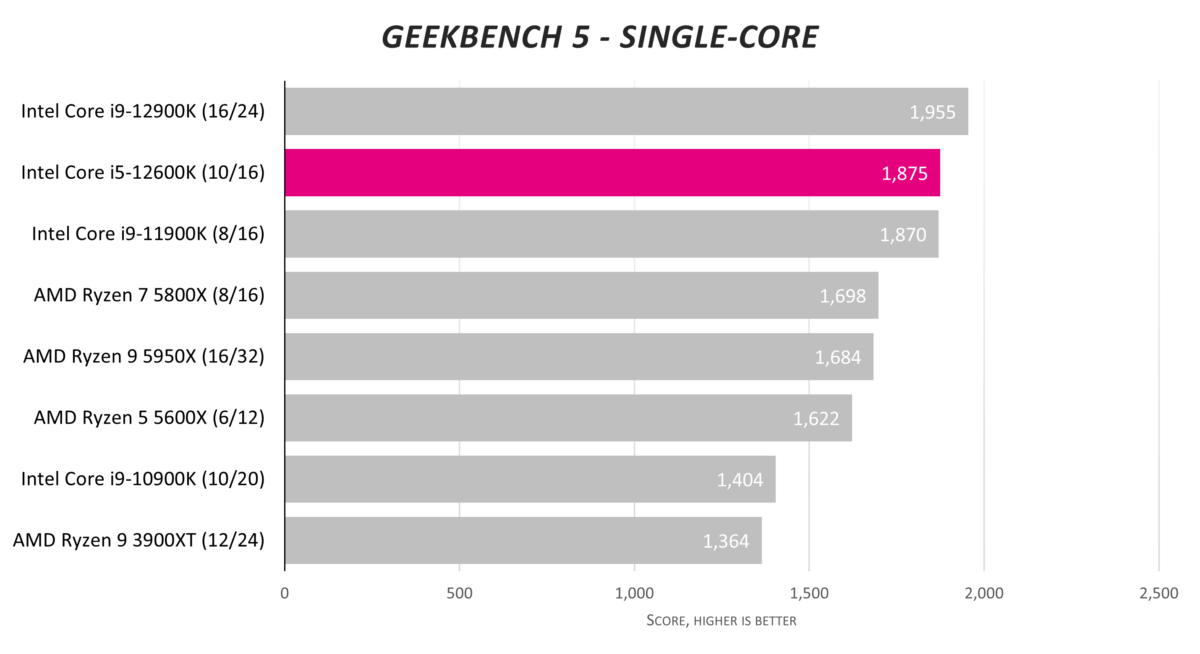
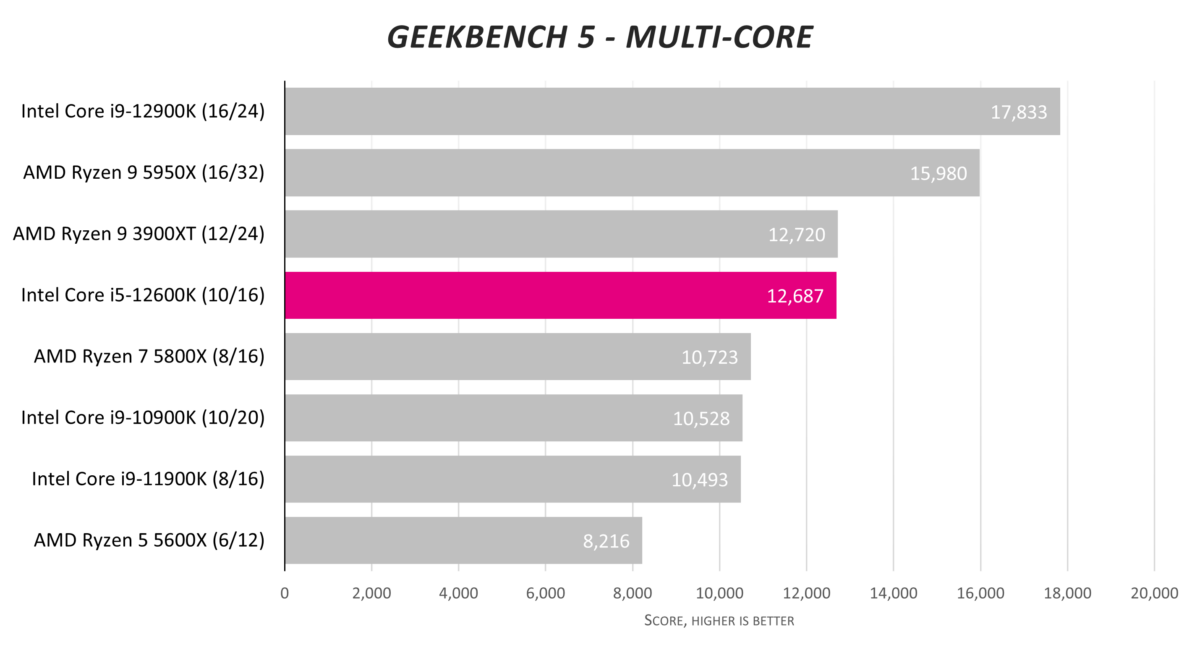
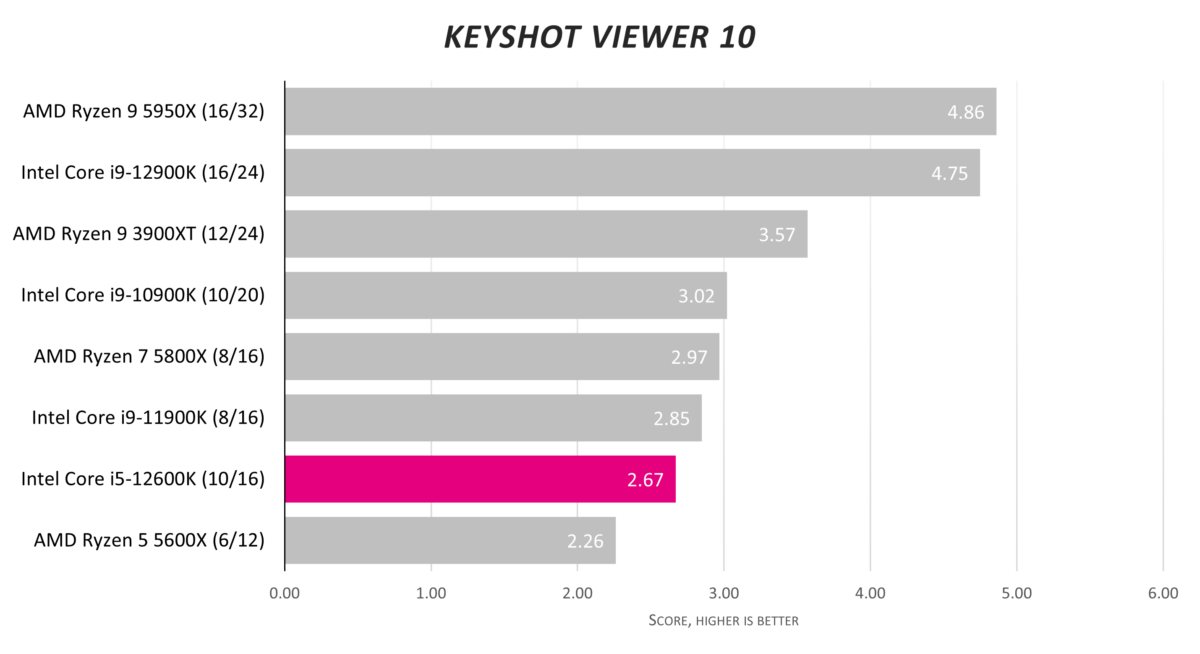
Core i5-12600K is a good match for the dearer Ryzen 7 5800X. Comparing on an even pricing keel, however, results in multithreaded performance being over 50 per cent higher in many instances.
The sample processor hums along at an all-Performance-core speed of 4.5GHz, helping explain the solid numbers. Interestingly, though placed in the Maximum Turbo Power 150W state in BIOS, the chip doesn’t exceed the base 125W. Bodes well for energy efficiency.
Memory Performance
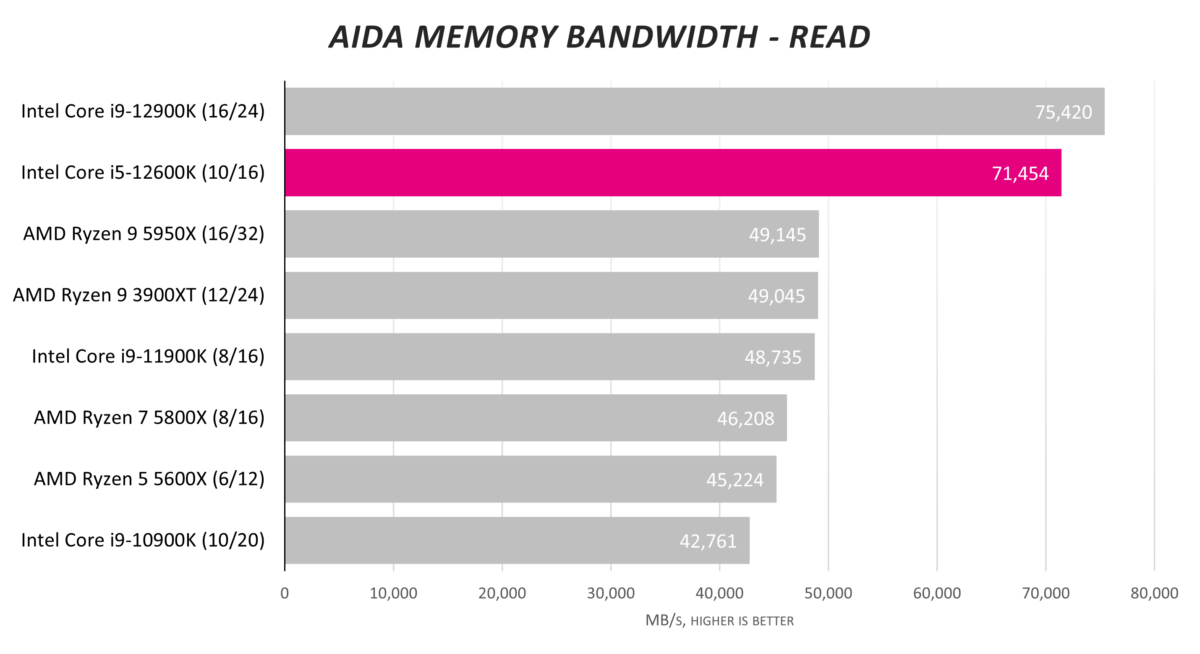
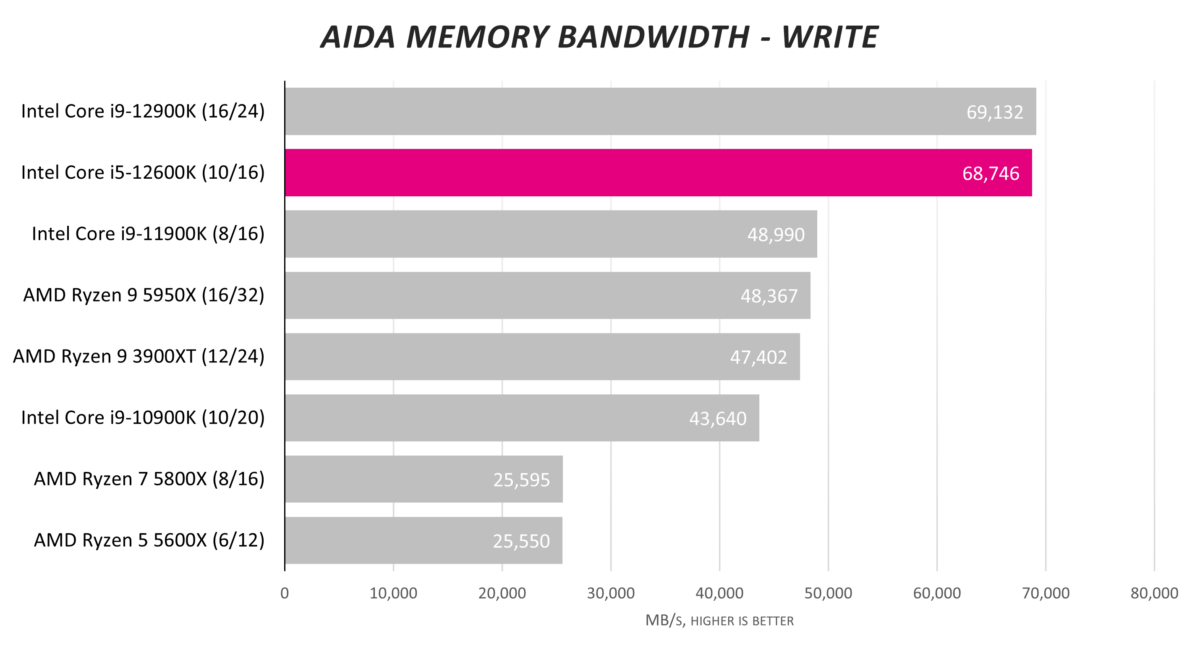
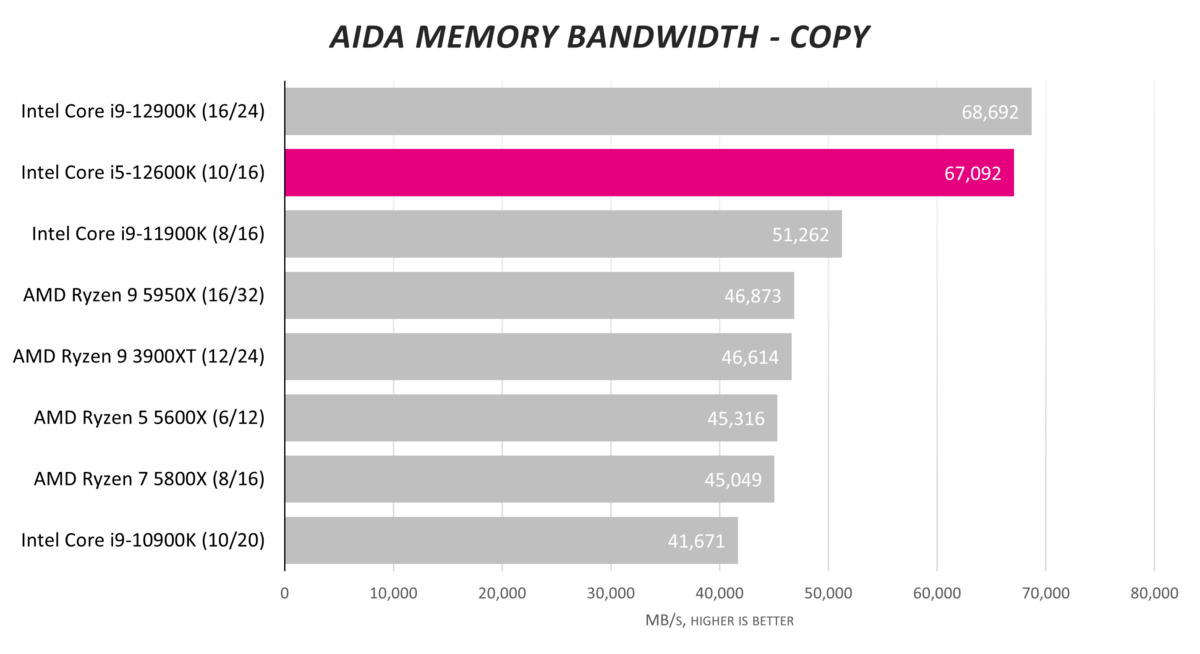
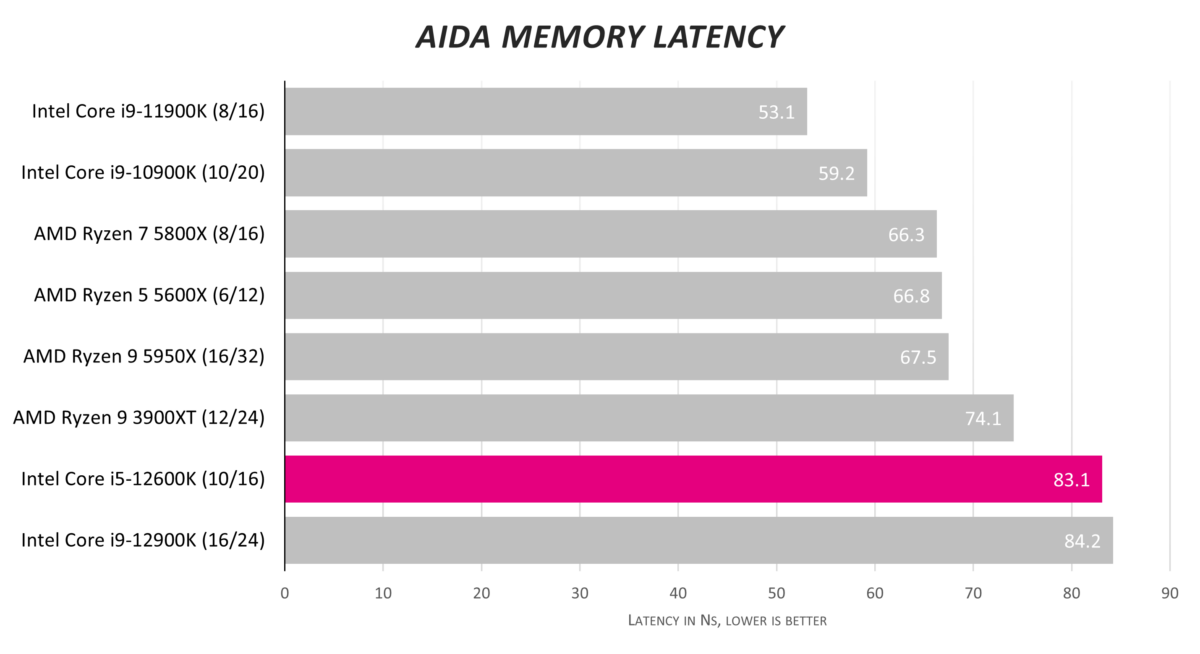
DDR5-4800 isn’t as potent on the Core i5 as it is on Core i9. That said, bandwidth numbers remain excellent, though latency is of some concern.
System and Gaming Performance
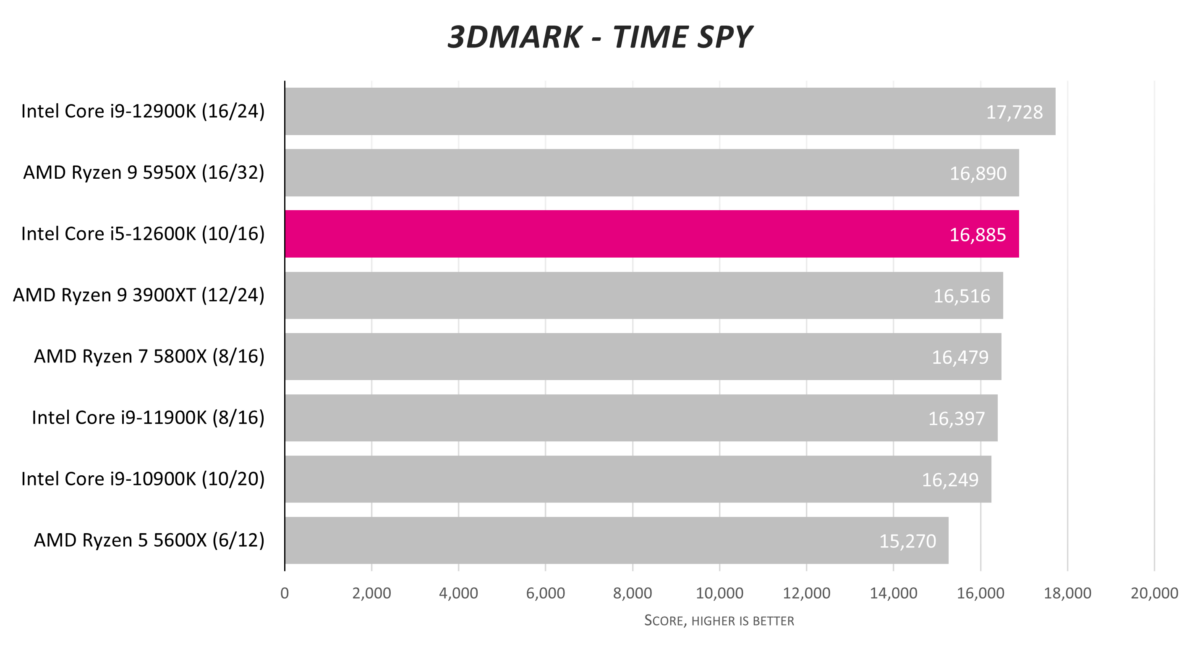
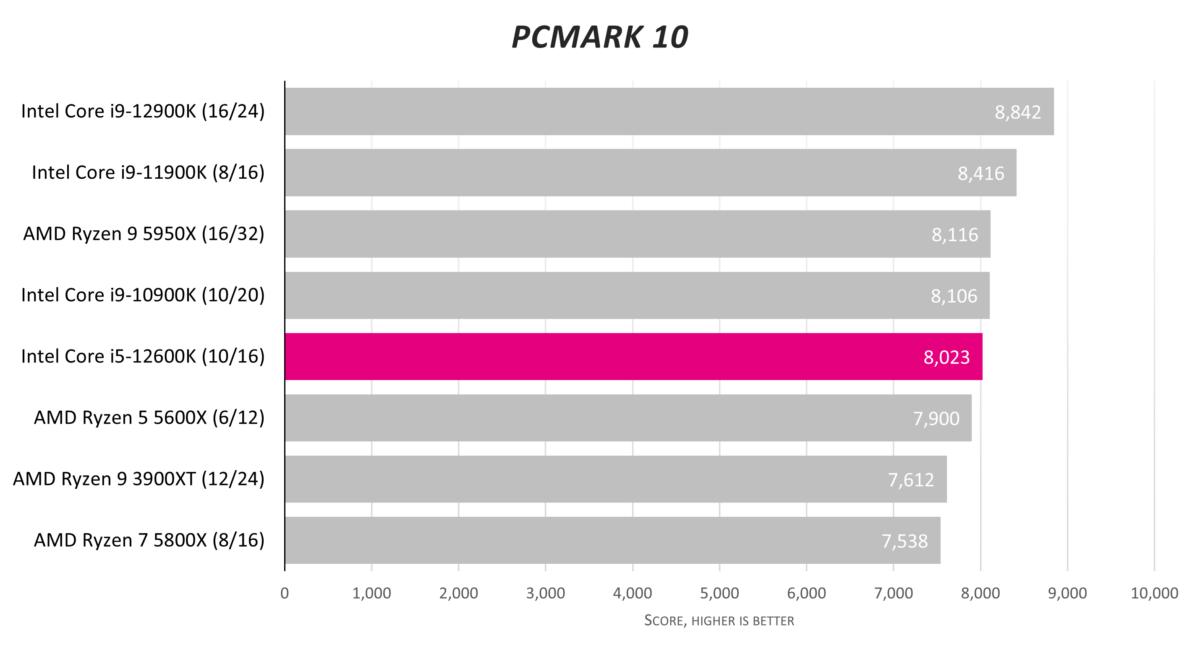
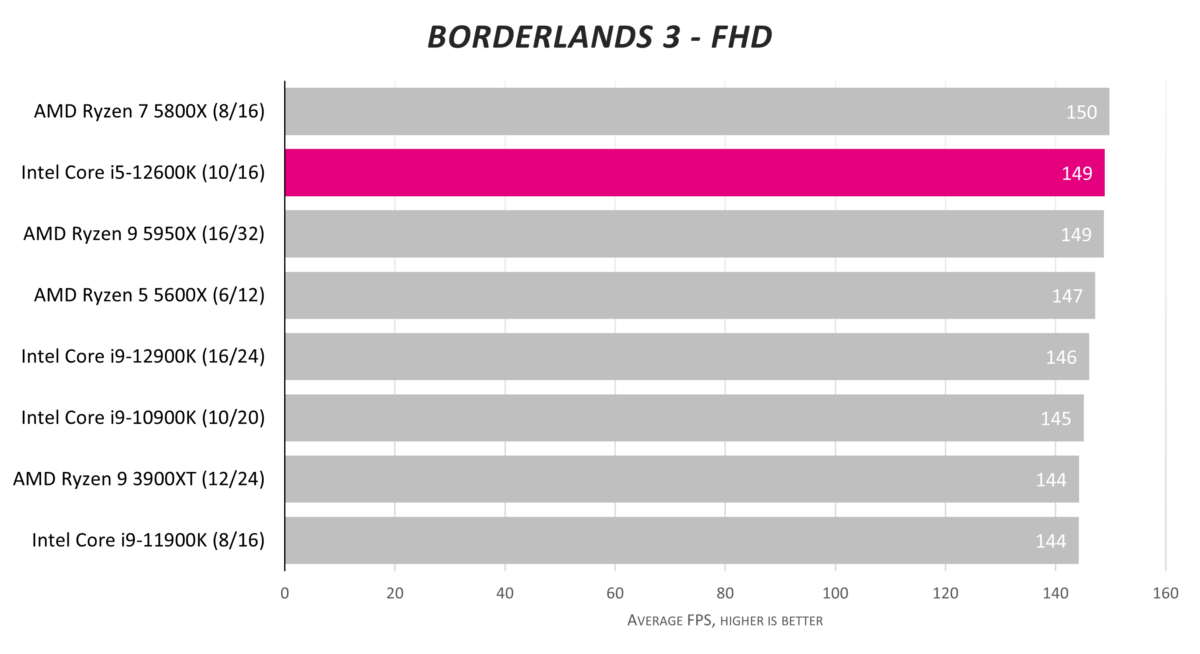
Any notion the Core i5-12600K is a poor chip for gaming is quashed by the results above. Any modern processor will make a good fist of 1080p gaming when allied to a top-notch discrete card.
Core i5-12600K trades blows with the Ryzen 5 5600X in other games. A clear winner is hard to establish, via our games, but rest in the knowledge there’s enough subsystem oomph to enable high-framerate gaming.
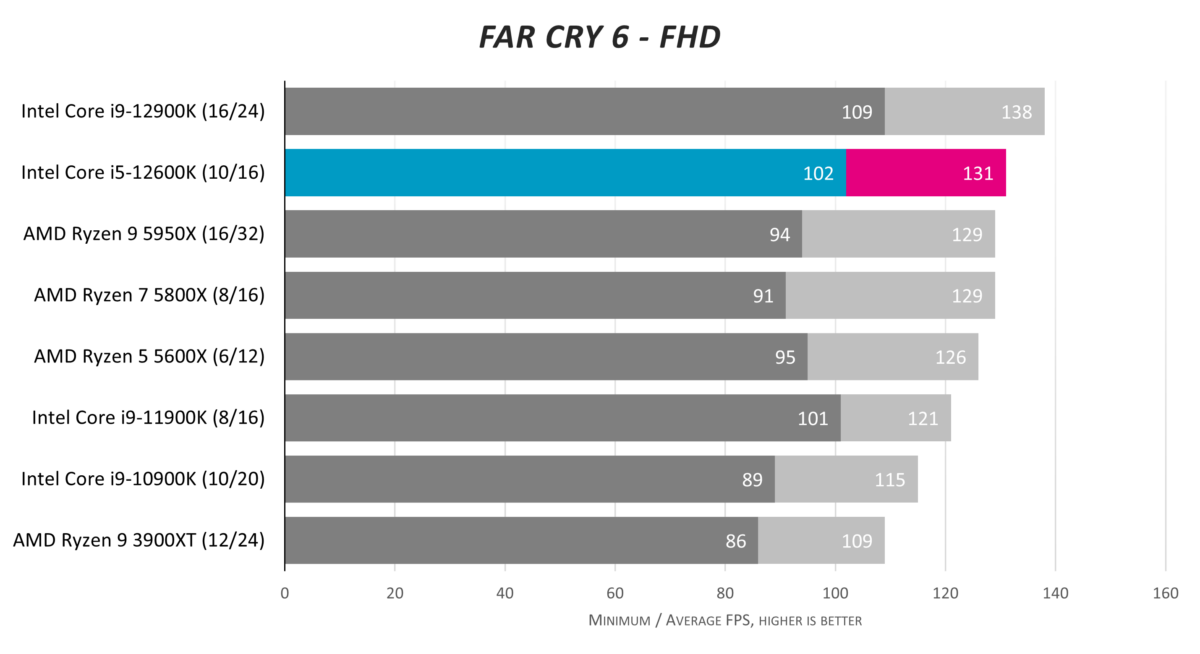
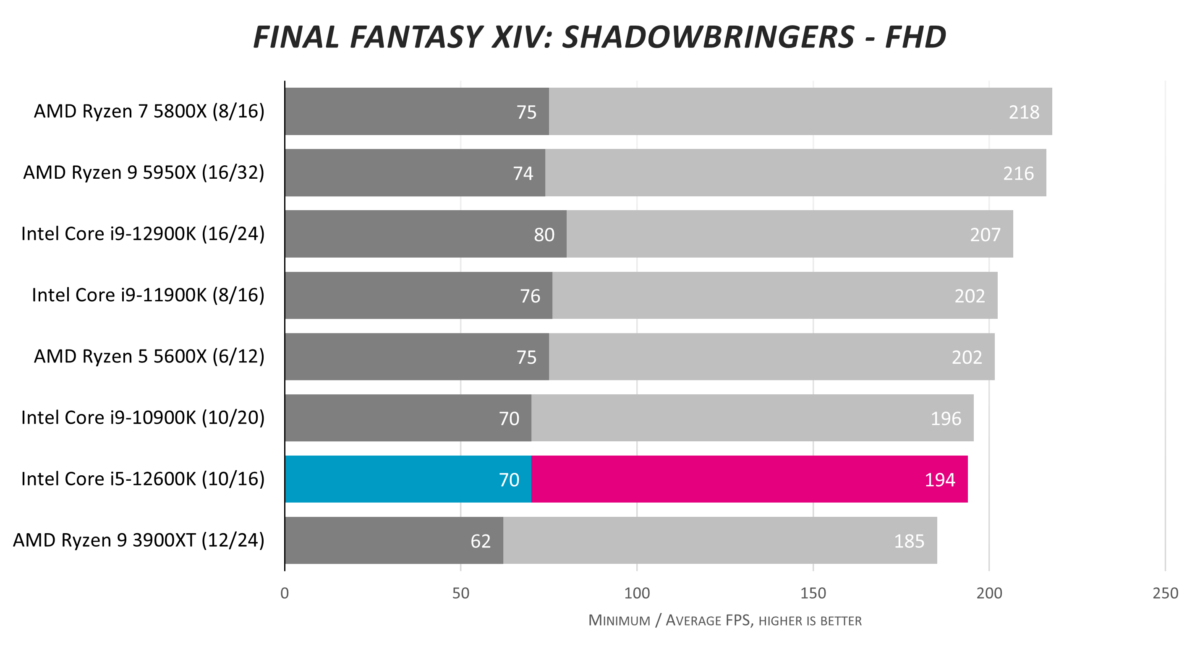
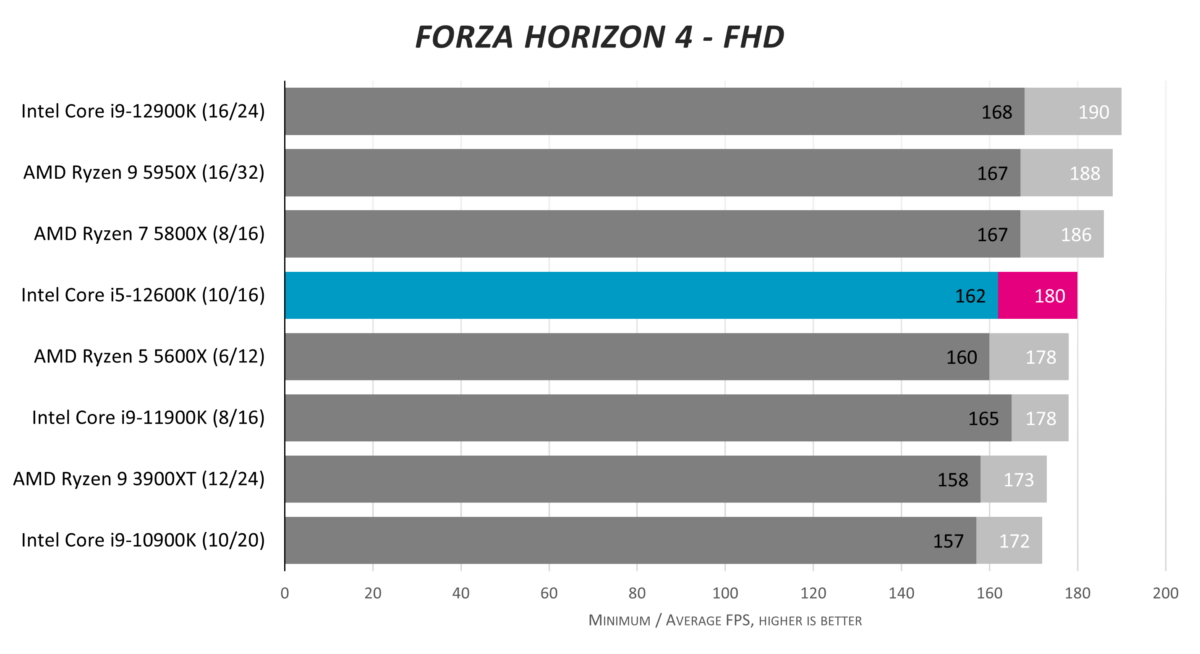
Power, Value and Efficiency
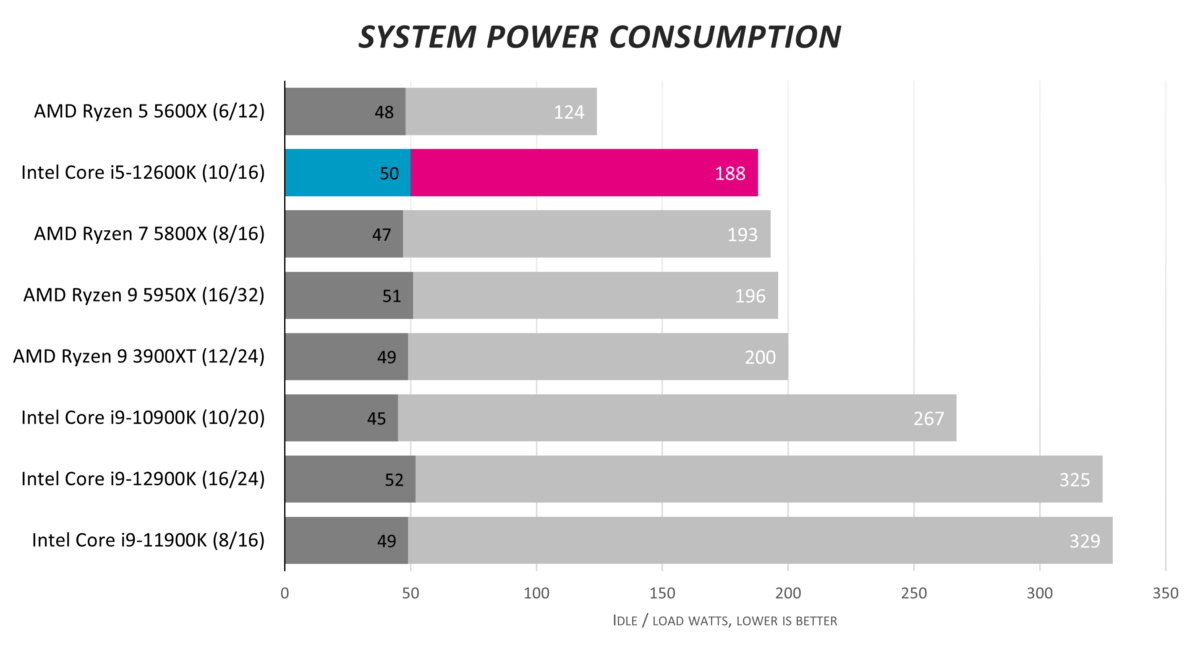
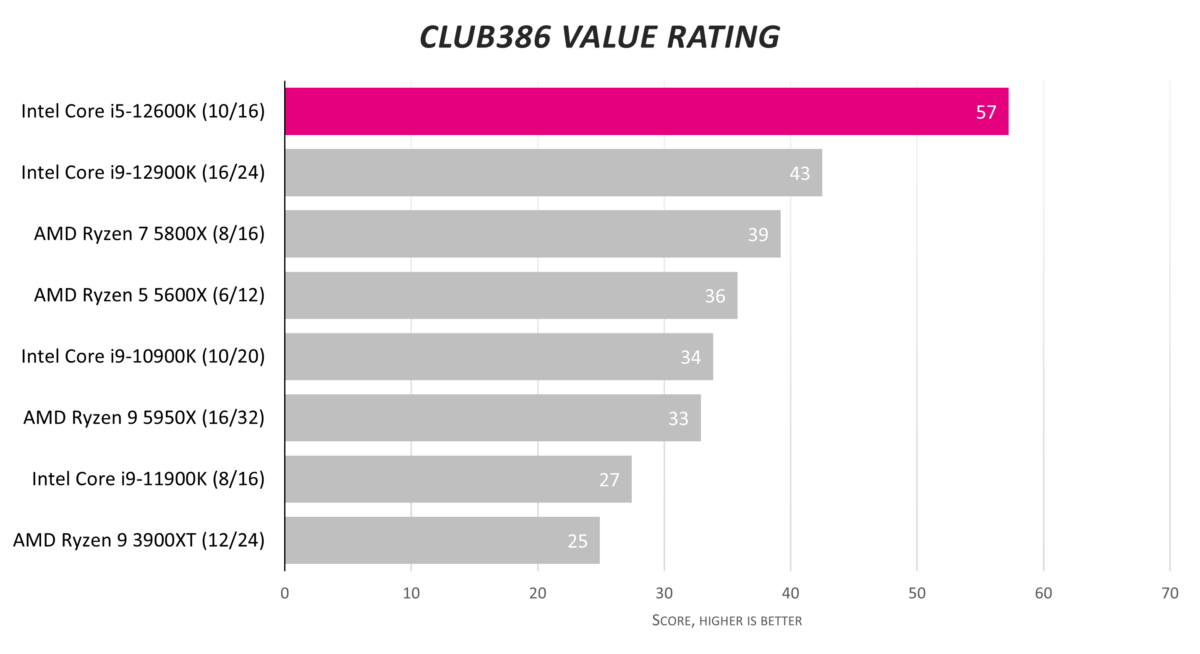
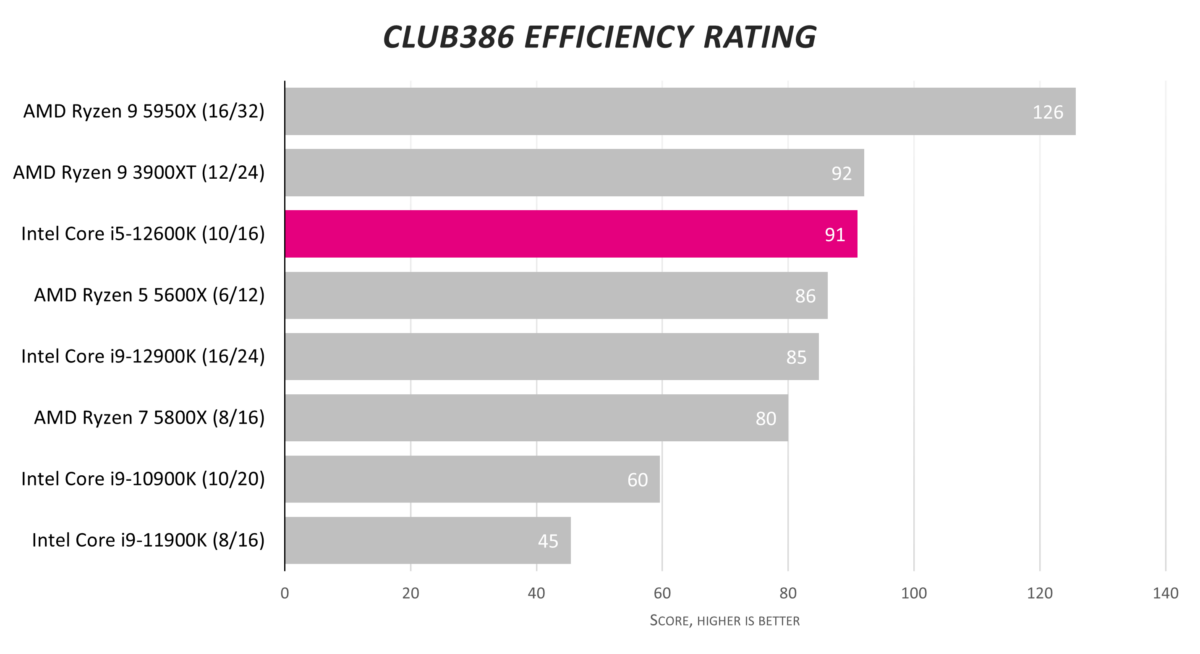
Power consumption in Cinebench is restrained compared to other Intel models, yet there’s no way of getting close to the figures posted by the 65W Ryzen 5 5600X.
This Club386 Value Rating divides the Cinebench MT score by the USD retail processor cost as on November 25. Great performance is augmented by the $300 price tag, causing the Core i5-12600K to leap to the top of the charts.
Club386 Efficiency rating, meanwhile, takes performance into account against system-wide power consumption. Core i5-12600K does well enough. There’s no touching AMD’s champion Ryzen 9 5950X, which pulls a similar amount of power but scores a lot higher.
Overclocking
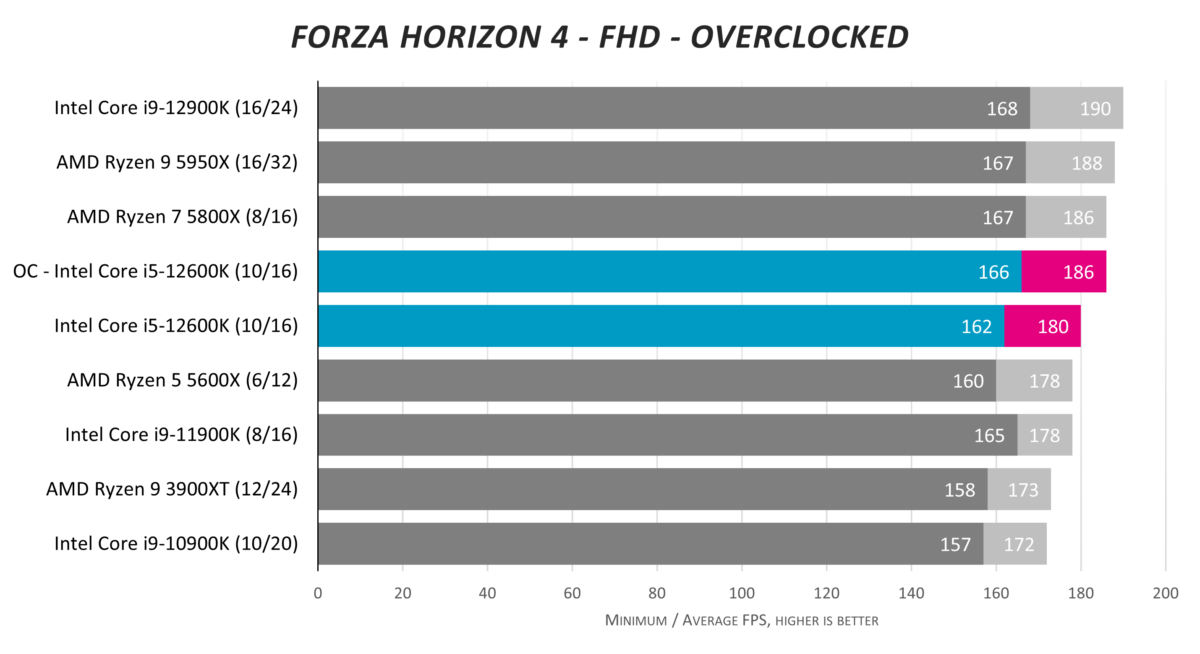
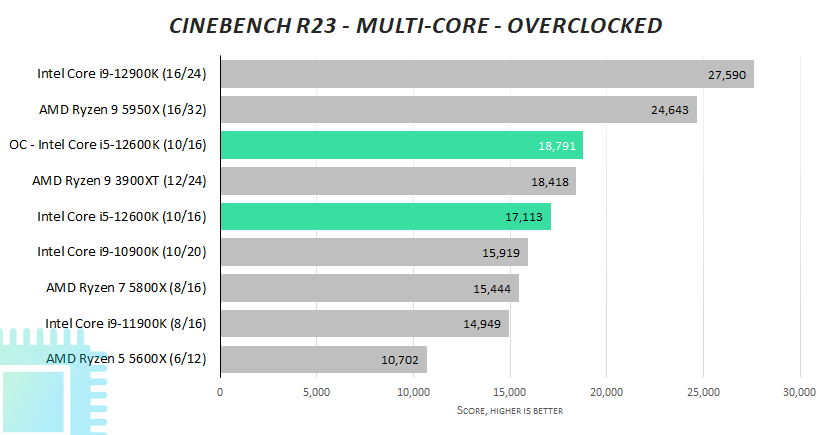
We installed a 1.40V operating voltage and inched up Performance cores to 4.9GHz and Efficient to 4.0GHz. Doing so increased the package power from 120W to 230W, putting cooling into sharper relief.
The 10 per cent CPU performance improvement is welcome, of course, though we worry about the elevated power levels if using only basic cooling.
Conclusion
Intel comes rampaging back into the enthusiast imagination with 12th Gen Core. Though it is inevitable Core i9 garners all the attention in the weeks after launch, the real star of the clan is Core i5-12600K.
Armed with hybrid cores offering a total of 16 threads, framerate in games is robust while single- and multithreaded performance is oftentimes in a different league to on-paper competitor Ryzen 5 5600X.
It isn’t just AMD midrange champion that gets taken to task. Core i5-12600K has enough muscle to slap around the Core i9-11900K – last generation’s best CPU from Team Blue – more often than not. That statement alone is incredible.
Sure, one needs to invest in a Z690 motherboard to get up and running but given the forward-looking nature of the platform – PCIe 5.0, for starters – it’s clear that Intel has a winner with the sub-£300 Core i5-12600K.
AMD knows this and has covertly cut the price of the actual performance competitor, Ryzen 7 5800X, to £330 or so at retail. Such a move muddies the decision waters some more, but if one aspect is abundantly clear during this editorial, there’s really good performance/value to be had right now.
Verdict: Intel Core i5-12600K brings a new level of weaponry to the mainstream CPU space, with the full payload aimed squarely at Ryzen 5000 Series.

